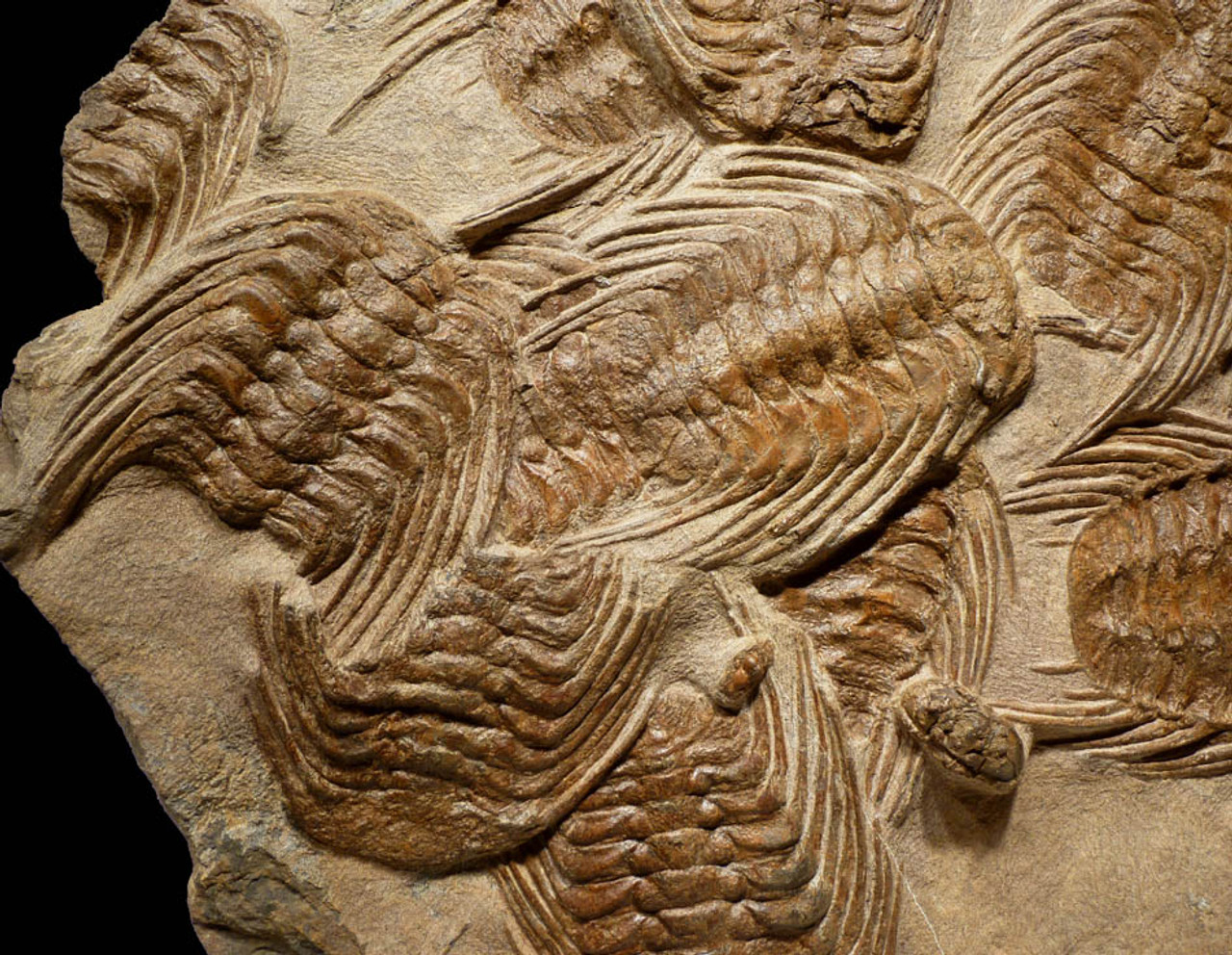Product Description
ITEM #
|
TRX200
|
||
ID
|
Selenopeltis
|
||
FOUND
|
Ktaoua Formation - Anti-Atlas Mountains, Morocco
|
||
AGE
|
ORDOVICIAN: 488 - 443 million years ago
|
||
SIZE
|
32" x 16.5" x 2" thick overall, trilobites 6" to 5" in lengths
|
||
CONDITION
|
100% GENUINE NATURAL MULTIPLE GROUPING OF TRILOBITES
|
||
NOTE
|
TRUE MUSEUM SHOWPIECE SPECIMEN - INCREDIBLE DETAIL
|
||
INCLUDES STAND - Actual Item - One Only
Comes with a certificate of authenticity / information sheet |
|||
CLICK HERE TO LEARN MORE ABOUT TRILOBITES
Truly a museum grade display fossil slab of impressively large proportions, this is an amazing 100% NATURAL association of 24 complete and partial large Selenopeltis spiny trilobites on their original sedimentary fossil layer. Such a naturally-occurring concentration of these trilobites in well-preserved form is uncommon. Furthermore, the quality of the overall grouping as well as the intactness of the rock layer is something that is RARELY seen. If a museum wished to display a visually impacting specimen of exotic, extinct marine life from nearly a half a billion years ago, this piece would be one that public visitors would likely remember and be duly impressed by!
Many multiple Moroccan fossil slabs are artificially created by gluing together partial and complete trilobites on a rock base to make an impressive grouping. Such fossils are NOT rare and of little scientific value compared to a specimen such as this where all trilobites died in this position as seen above and together in a layer. Some catastrophic event must have occurred to kill off so many of these at once. The evidence of this being an original and natural association of these trilobites is the fact that there are cracks running through the trilobites that correspond to the fractures seen on the back side of the slab.
The trilobites were prepared where they all were originally buried with NO FABRICATION or adding of parts missing to the trilobites or repositioning of the fossils. Where it was needed to expose a trilobite in a lower layer, this was done and if parts of the trilobites could not be saved to reveal portions of the rock or if they were only partial carapace fossils, this was left as it was found without fabricating complete trilobites out of partials. Again, from a scientific perspective, this is an EXTRAORDINARILY RARE specimen because it is natural and so well preserved with such a large concentration of these trilobites, some in enormous lengths.
For the ultimate commercial or residential interior design application or for a public museum exhibit, this is an extremely rare and interesting very large fossil slab of the finest scientific grade showing a rare and visually intriguing 100% AUTHENTIC AND ORIGINAL example of some of the earliest complex marine creatures on our planet.
 US DOLLAR
US DOLLAR
 EURO
EURO
 AUSTRALIAN DOLLAR
AUSTRALIAN DOLLAR
 CANADIAN DOLLAR
CANADIAN DOLLAR
 POUND STERLING
POUND STERLING


















